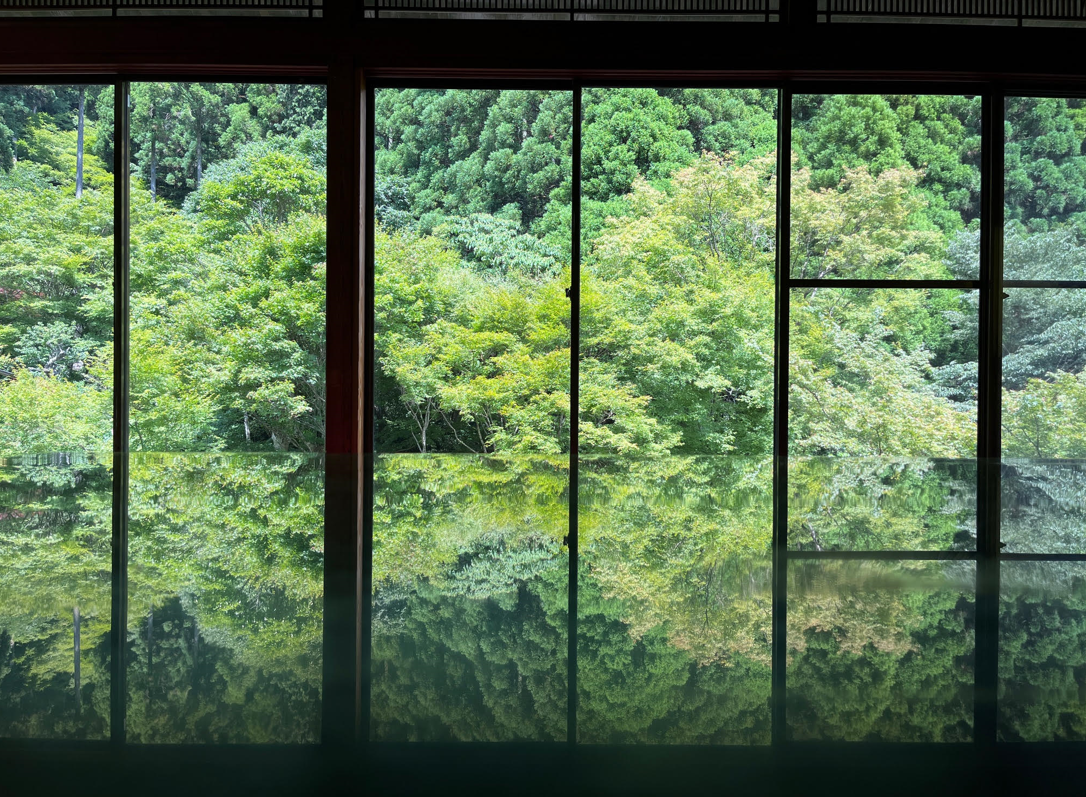Saga isn’t the kind of place that shouts for attention. Tucked away on the western edge of Kyushu, it’s usually skipped over for bigger names nearby. It’s the kind of place where time feels like it stretches just a little longer, where small towns surprise you with architecture and craftmanship. A couple of us from the Freeplus team finally made the trip, thanks to the Saga Prefecture Tourism Federation and I’m still thinking about it.
It took just three hours from the bullet train in Osaka to reach Takeo Onsen, and we headed straight for the town’s public library. It's not exactly a usual travel stop, but this one had been on my radar for a while. Designed with warm wood and wide-open spaces, the building feels like a modern gallery turned library. Inside are books (of course) and a stylish shop with carefully made goods from around Saga like ceramics, textiles, even stationery, each one feeling like it belonged. 
Next up was a green tea experience tucked away in a small Japanese garden. It's one of those places that doesn’t show up on the first five pages of search results. With the tea master guiding us through the first round, we tried whisking our own matcha like total pros (or so we told ourselves). The second cup was all on us to try for ourselves. It came with a piece of yokan, a smooth, sweet jelly that’s a local favorite in Saga. Quiet, calming, and completely unexpected.

In Arita, porcelain is part of daily life. Even our lunch was served in delicate Arita ware, from the lunch box down to the smallest side dish. After eating, we visited a working studio where craftspeople were carving, glazing, and firing with quiet precision. The town itself is made for wandering: peaceful streets and hardly any crowds. One of the highlights was Tozan Shrine, where the torii gate is made entirely of porcelain something you definitely don’t see every day.

The next stop was Kouraku Kiln, a studio with deep roots in Arita’s porcelain legacy. Housed in what used to be a school, the space is huge, full of quiet activity and artists completely focused on their craft. The guide spoke English and gave us a behind-the-scenes look at the process. One of the highlights is the “treasure hunt” activity where visitors can dig through shelves of porcelain to find pieces to take home. 
One of the real hidden gems was Geijutsu no Mori (pictured in the cover photo). Since it's summer, we sat on the tatami floor inside the main space, watching the greenery stretch out through floor-to-ceiling windows. The view was reflected perfectly on a glossy table, making it feel like a living mirror. For those who enjoy Japanese landscapes, it’s an easy place to stay awhile. There’s a short 15-minute loop walk through their garden, or a 30-minute course that winds around the mountain. In autumn, the whole area turns into a sea of maple leaves. We’re already talking about going back.
Saga surprised us in the best way and we are ready for more. If you’re curious about planning a trip to Saga or anywhere else in Japan, feel free to reach out. We’re happy to help design something that fits just right.

